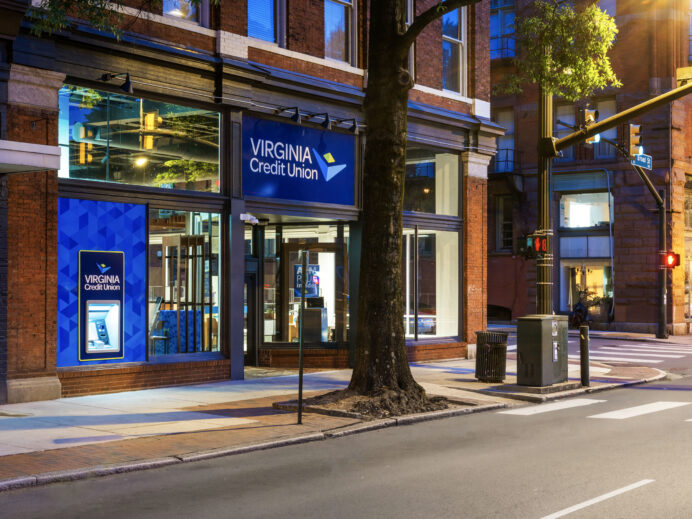Investing in Branch Transformation, Part II
How to balance evolving demands for better banking experiences and institutional needs for more efficiency
With a record number of branches permanently closing their doors in 2020 – 2,284 net closures according to S&P – one might be tempted to think the branch channel is past its prime.
But uncovering several truths behind the headlines, we’ve come to quite a different interpretation. Foremost among those: Many closures that took place in 2020 were already planned prior to the pandemic, a revelation resulting in early predictions of widespread branch shutdowns being reassessed by the end of the year. Another interesting fact hiding in plain sight? A significant number of new branches entered markets in 2020 – 1,040 according to S&P – with openings overtaking closures in July for the first time in nine years.
Altogether, what this activity says to us is that there is an enduring – albeit evolving – role for the branch. Further, in a changing environment where so many branches are operating differently during the pandemic, it’s crucial for banks to find ways to cut costs and reinvest in a touchpoint that consumers consistently support. What that requires, though, is a commitment to branch transformation and a focus on identifying how far and how fast bank decision-makers are willing to go in resetting their transformation journey. Ideally, that journey successfully balances digital and physical delivery to create a customized North Star of human-centric experiences, moving seamlessly from the brand to the branch and back again.
Experiences in banking are digital (online and mobile banking), physical (branches and drive-up) or a hybrid of the two (appointment setting for the branch, ATMs/ITMs, and live chat with a banker). But unlike digital alone which can be more easily modified, the most resource-intensive of these two macro channels is the physical. Further, the physical branch network presents unique challenges that require critical planning and significant time to implement. It’s not simply new features to update in an app; instead considerations include branch formats, properties that banks lease or own, capital constraints, staffing with real people in these environments, and banking’s local commitments to the communities they serve.
Delivering Efficiency
Many banks boosted digital capacity during the pandemic to meet exploding consumer demand. Certainly, FIs that are successful in bridging the physical-digital divide – like deploying ITMs detached from the branch – will be better positioned post-COVID. But digital is not a replacement for the branch. According branch insights on Believe in Banking: “[W]hile their role may be shifting toward supporting more consultative experiences, branches remain an important center of banking activity… Despite increases in digital for routine transactions, Novantas and McKinsey report that 79% [of consumers] have never opened an account digitally and only 8% of consumers are ready for a digital-only bank.”
As we witnessed during COVID, digital can certainly do some heavy-lifting when it comes to transactions and that surely means savings for banks. According to Accenture’s Global Banking Consumer Study in 2020: “Moving process-driven interactions to digital channels and keeping more complex matters in-branch meant they saved on costs while protecting personal relationships with customers.” However, leaning in too heavily into digital also comes at a cost, if it’s not part of a strategic and holistic customer journey. The same Accenture study finds that accelerated digitization risks commoditization and consumer trust, with the latter falling 14 points since 2018.
Delivering Experiences
Moving transactions to digital alone is not what’s causing this erosion in trust. Consumers want digital convenience, after all, and have demanded banking catch up to other consumer experiences. What’s causing commoditization and lack of trust is banks’ shifting transactions AND limiting opportunities for high-value interactions at the same time. By shuttering branches without identifying and communicating receiver locations and not providing more formats – be they smaller, self-service or hybrid channels for consumers to use – banking becomes just another chore, not a trusted relationship or a place for personalized experiences that are valuable to the consumer and bank, alike.
Smart branch transformation relies on finding the right balance of efficient delivery with a frictionless consumer experience. More efficient delivery doesn’t have to mean less service or even less presence for that matter. With hub-and-spoke networks, larger full-service and flagship locations dot connect along critical corridors with smaller, more efficient formats like micro, ATM/ITM and mobile branches. The benefit of going smaller and more self-service is that banks still benefit from market presence and consumer affiliation necessary for growth – the Halo Effect – while minimizing spending on operational processes and providing consumers with the convenience and consultation they crave, close by.
In our next article in the Branch Transformation series, we’ll look at the analytics approach that drive cost-cutting consolidations and investments in new branches and enhancements to grow. Also, be sure to tune into Believe in Banking as it tracks the big trends like branch transformation, that are impacting financial services and informing the banking experience. For more insights on branch and brand strategy, contact Adrenaline’s experts at [email protected].
Adrenaline is an experience design agency that creates and implements end-to-end branded experiences through creative and environmental design. We enhance our clients’ customer experiences across digital and physical channels, from their branding and advertising to design and technology in their spaces. After transforming an organization’s brand, Adrenaline extends it across all touchpoints — from employees to the market to in-store environments. And, we focus on serving industries that sell human experiences including financial, healthcare, sports and entertainment.









